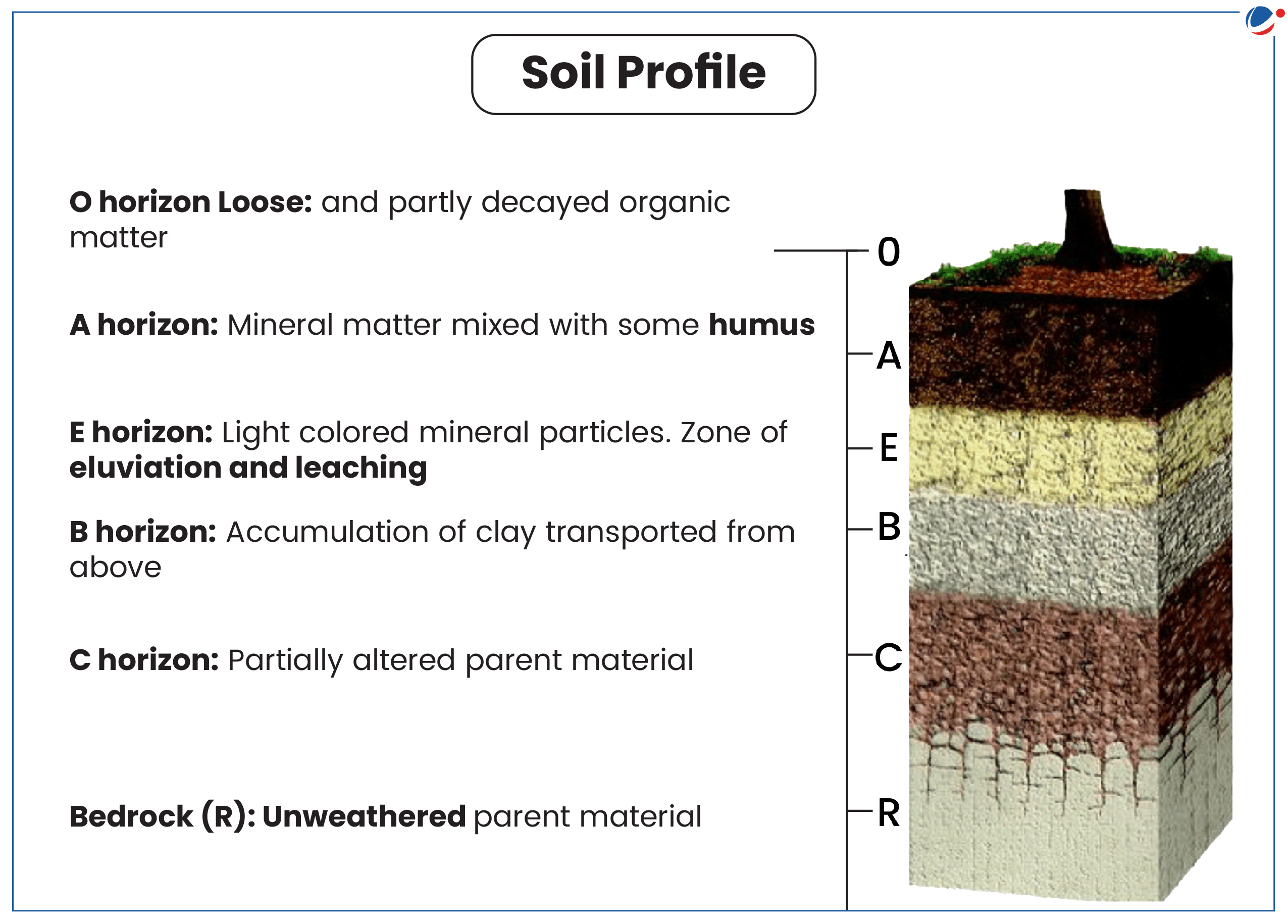Why in the News?
At International conference on Soils held in Morocco, UNESCO has pledged to support its member states by establishing 'world soil health index' in association with its international partners.
More about News

- World soil health index
- Standardized measure for assessing soil quality across regions and ecosystems.
- Identifies degradation or improvement trends.
- Identifies areas at risk.
- Enhances understanding of soil management effectiveness.
- In addition, UNESCO will launch a pilot programme for long-term soil and landscape management in ten natural sites supported by its Biosphere Reserves Programme.
About Soil
- Defined as the mixture of rock debris and organic materials which develop on the earth's surface.
- Factors of soil formation: It is influenced by relief, parent material, climate, vegetation, life-forms, time, and human activities.
- Importance: Healthy soils are essential for maintaining ecosystems and biodiversity, regulating the climate, producing food and purifying water.
- Soil Degradation
- Soil degradation is the physical, chemical and biological decline in soil quality.
- It can be the loss of organic matter, decline in soil fertility, and structural condition, erosion, adverse changes in salinity, acidity or alkalinity, and the effects of toxic chemicals, pollutants or excessive flooding.
- According to the World Atlas of Desertification, 75% of soils are already degraded, directly impacting 3.2 billion people, and if current trends continue, this proportion will rise to 90% by 2050.
- As per ISRO's Desertification and Land Degradation Atlas of India (2021)-Total degraded land is 96.4 million hectares (29.32% of total geographical area).
Factors behind degrading soil health
- Deforestation: Vegetation destruction accelerates soil degradation, increasing susceptibility to wind and water erosion, resulting in loss of organic material, decreased soil aggregation, stability, and fertility.
- As per ISRO's Desertification and Land Degradation Atlas of India (June 2021) report around 30 Mha Desertification/Land Degradation in India (during 2018-19) happened through Vegetation degradation.
- Salinization / Alkalization: Activities such as improper canal irrigation water management can lead to salinization in semiarid and arid areas, causing salt accumulation in root zones.
- E.g.,- About 50 % of the arable land in Punjab has been damaged due to salinity.
- Improper crop rotations: Intensive cereal-based rotations (rice and wheat) due to various pressures such as Population growth, land shortage, etc. causing soil fertility decline.
- Overgrazing: It exceeds land's livestock carrying capacity which also reduces vegetation quantity and quality.
- E.g., Degradation of Banni grasslands of Gujarat.
Steps taken to improve soil health
- Promotion of organic farming: Organic farming is being promoted through various schemes/programmes, namely Rashtriya Krishi Vikas Yojana (RKVY), Mission for Integrated Development of Horticulture (MIDH), National Mission on Oilseeds & Oil Palm (NMOOP) etc.
- Soil Health Card: Card contain the status of soil with respect to 12 parameters, namely N,P,K (Macro-nutrients); S (Secondary- nutrient); Zn, Fe, Cu, Mn, Bo (Micro - nutrients); and pH, EC, OC (Physical parameters).
- Improving Forest Coverage: As per the India State of Forest Report (ISFR) 2021, in 2 years total forest and tree cover increased by 2261 square kilometre in India, which help in reduce soil erosion.
- Prevent burning of crop residues: National guidelines have been issued to prevent burning of crop residues, thereby ensuring their proper recycling for improving soil health.
- Bonn challenges pledge: The Bonn Challenge is a global goal to bring 150 million hectares of degraded and deforested landscapes into restoration by 2020 and 350 million hectares by 2030.
Way forward
- Adopting Sustainable Agricultural Practices: Diverse crop rotations enhance soil health, reduce pests, boost microbial activity, and improve yields.
- Maximize Soil Cover: Cover crops can be planted as part of both grazing and cropland operations to maximize soil cover year round.
- The presence of protective vegetative cover such as grass, shrubs, cultivated crops, even stubble, decreases the velocity of the wind and minimizes its eroding capacity.
- Moreover, the root system of vegetation helps to compact and keep together soil particles.
- Minimize Disturbance: Adopt measures like limiting tillage, optimising chemical input, etc.
- Integrated land use planning: Allocate resources considering varied uses and user demands across agricultural, industrial, and other sectors to reduce negative effect on soils.
- Precision Farming: Utilizing GPS, sensors, and data analytics to optimize soil management practices, ensuring the right amount of water, nutrients, and pesticides are applied where needed.
- Community-Based Soil Conservation: Identification and/or development of suitable approaches/tools that help to carryout participatory soil health assessment.






